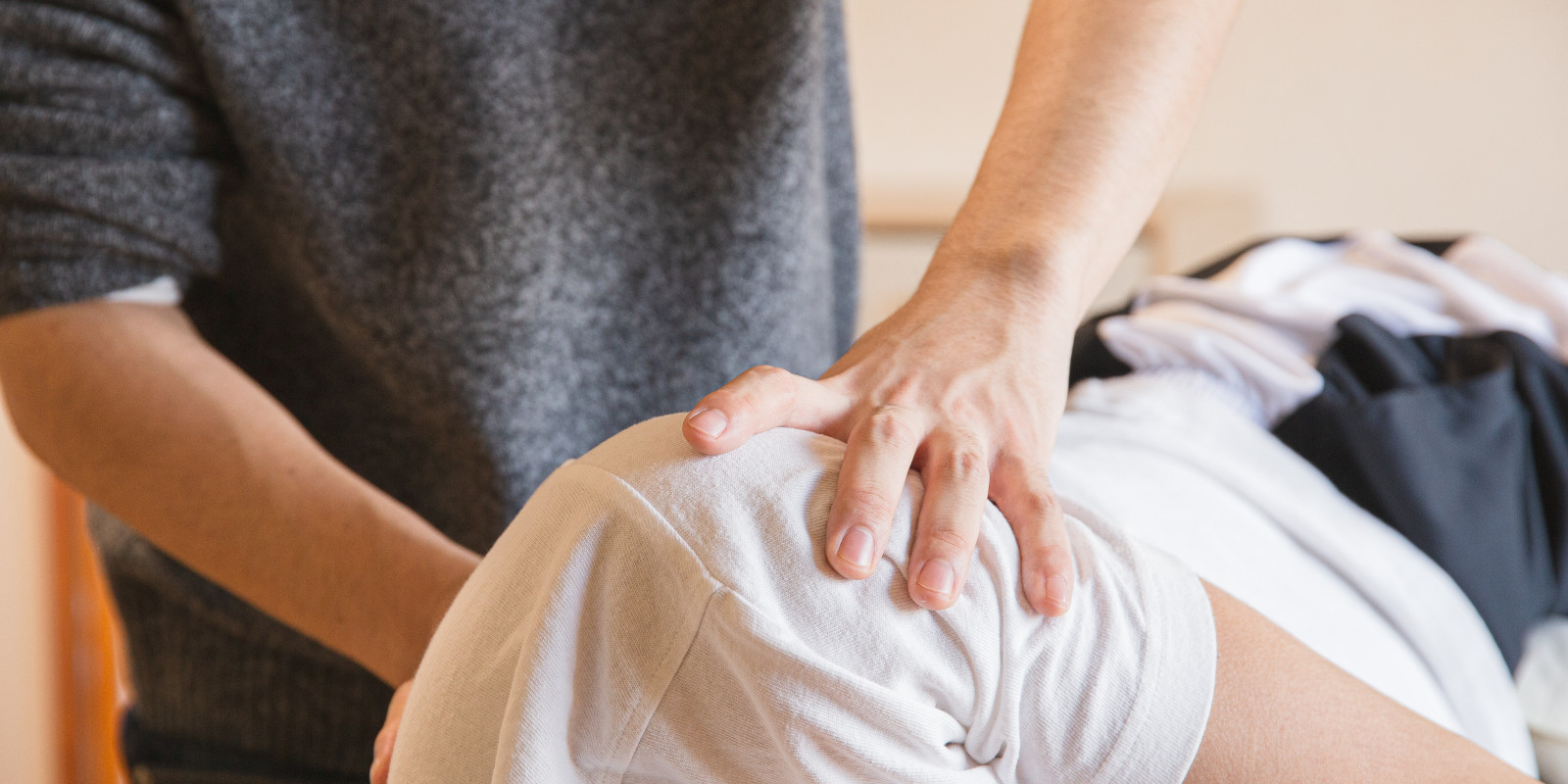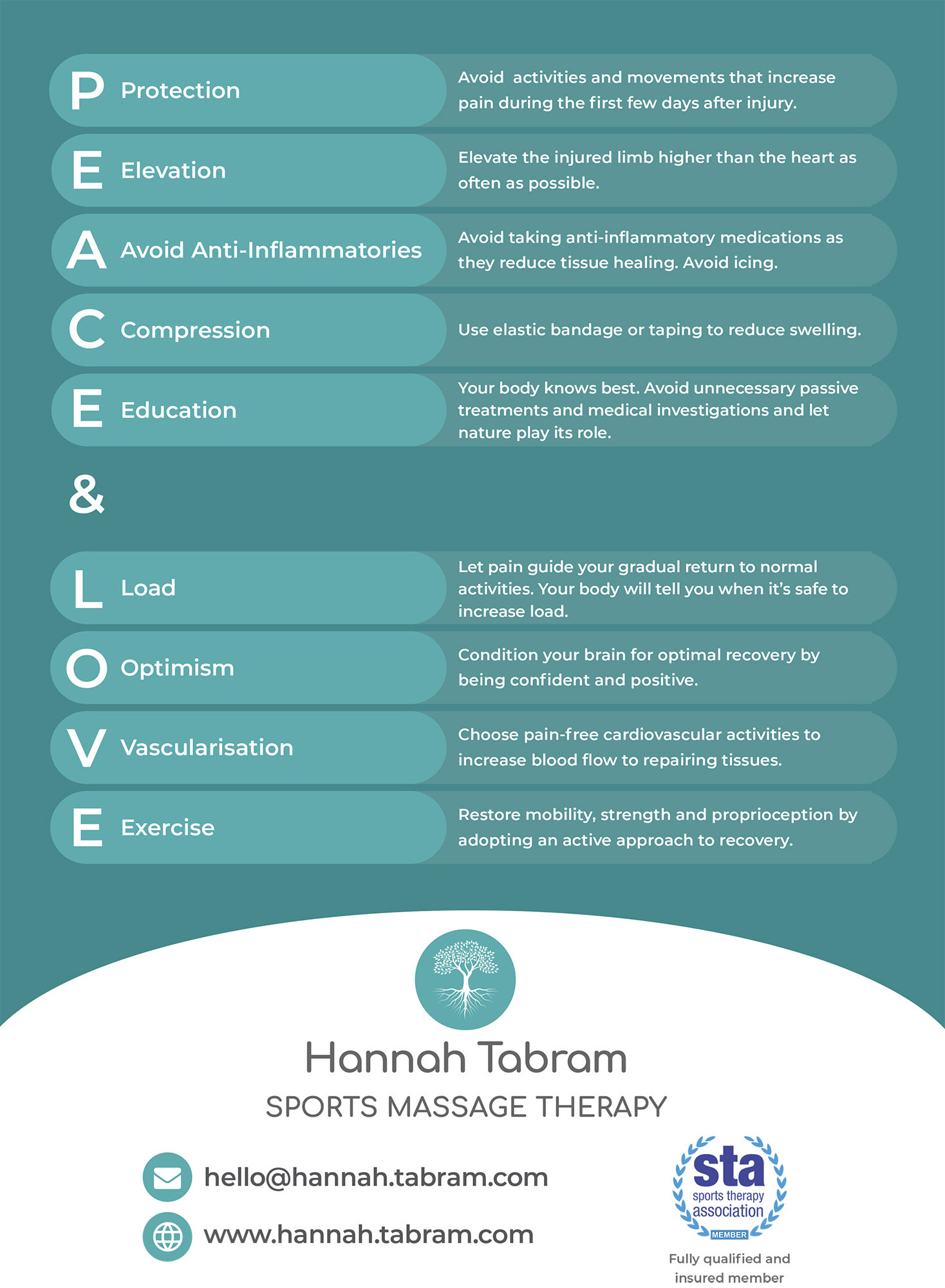

Picture the scene - you’re running along through the woods, feeling great about life - then you hit a tree root, and shortly after that you hit the deck. Or your training is going brilliantly, but as you up the load your elbow starts to ache and it just won’t go away… Oh no - whether through trauma or simple overuse, you’ve picked up an injury. What do you do now? How do you give your body the best chance of recovery?
In the past, we’d have whacked on an ice pack, downed some anti-inflammatories and rested up - but is that the best thing to do? Not necessarily. Sports science is always moving, and these days PRICE and RICE are out and PEACE and LOVE are the way forward. So what - aside from a longer acronym to remember - does that mean for you? Read on to find out.
Broadly speaking, our bodies go through three phases in response to an injury.
This phase lasts for around between 3 and 7 days after the initial injury. The body will experience an inflammatory response, causing pain, redness, heat, and swelling. This initial, acute inflammation is an important part of the healing process, as it tells the body to send extra blood to the area and to break down and remove damaged cells, ready to replace them with new tissue.
This phase can begin at day 4 post-injury, and last for up to 6 weeks. The initial inflammation will calm down, and your body will begin to form scar tissue from collagen fibres. These fibres are laid down in a disorganised fashion and are at first weaker than the tissue that they’re replacing, so there is a danger of re-injury during this stage.
This phase can last for many months - even up to two years. The body will now begin to organise its new scar tissue to more closely resemble the damaged tissue it has replaced, forming a strong repair.
So, what do we need to do? Apply a bit of PEACE and LOVE:
P - Protection. In the first few days after the injury, we need to protect the site from further harm. This means avoiding movements or activities that cause pain.
E - Elevate. Elevate the injured limb above the level of the heart as much as possible. To encourage swelling to subside.
A - Avoid anti-inflammatories. As we saw above, our bodies need that initial inflammatory phase, so try to avoid anti-inflammatory medications, and ice packs.
C - Compression. Elastic bandages like tubigrip, or taping, can help to alleviate swelling.
E - Education. Remember, your body knows best! It was built to heal, so take your cues from its signals.
As you move through the initial inflammatory phase, that’s where a bit of LOVE comes in:
L - Load. You need to gradually load the injured area to encourage a strong repair. Let your body guide you - increased pain levels mean it’s time to back off a little.
O - Optimism. Do not underestimate the power of the mind, and try to keep a positive attitude. Remember that your body is strong, and can recover.
V - Vascularisation. This means encouraging a good blood supply to the area, which can be done with pain-free cardio exercises like cycling or using a cross-trainer.
E - Exercise. An active approach to recovery will help you to rebuild strength, flexibility, and proprioception.

As a level 4 sports massage and soft tissue therapist, I can help you through the recovery process, getting you back to doing the sport that you love. Contact me to find out more!
I've also created a free poster that you can download and display in your gym, changing room or clubhouse! Help your players to recover and get back to the pitch, tracks or trails quicker with a bit of peace and love.
Author Hannah Tabram. Category Blog. First published Fri, 16 Jun 2023 11:55:33 +0100
Previous post

Next post
